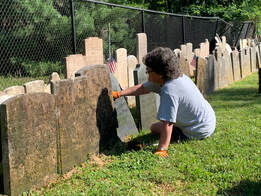 Nan Markey carefully removes decades (and centuries) of filth off these historic gravestones Nan Markey carefully removes decades (and centuries) of filth off these historic gravestones I was recently walking around the cemetery with trusted research assistant Marilyn Veek. We were chatting about various “Stories in Stone” offerings past, present and upcoming, along with other research endeavors taken on as part of our Friends of Mount Olivet (FOMO)membership group and the cemetery’s Preservation and Enhancement program begun in late 2017. We eventually came upon Area NN, a truly unique part of our historic grounds which hold the oldest collection of graves in the cemetery. The section here includes the mortal remains of folks formerly buried in three of downtown Frederick’s original burying grounds, specifically decedents associated with the Lutheran, Methodist and Presbyterian congregations. These churches, along with four others, were part of the genesis of Mount Olivet back in the early 1850s. A new, non-denominational communal cemetery on the outskirts of town would remedy the problem of existing churchyards having become filled to capacity, while in several cases, adjoining ground was needed to expand worship facilities for an ever-growing population. Here in Area NN, we are currently aided by the opportunity to read stones like never before in our lifetime because of the work our Friends group undertook last summer in cleaning these monuments. This came under the supervision of our FOMO monument cleaning committee under Nanette and Rob Markey. Most of these gravestones date to the early 1800s, and a few are from the 1700s. Many are beautiful examples of early stone mason craftsmanship, with some even carved in German, a language commonly spoken in town as English up through the early decades of the 19th century. One such downtown burying ground, long gone, was that of the Old Presbyterian Churchyard. This sacred plot was once located around the congregation's first meeting house on the southwest corner of North Bentz and West Fourth streets, at the point where today’s Dill Avenue begins.  A like-designed Presbyterian church structure of the same era A like-designed Presbyterian church structure of the same era Frederick's original English Presbyterian Church was constructed in 1780 and built of brick and boasted "high backed pews, a lofty pulpit, and a brick floor." A new house of worship was completed in 1825 on West Second Street, but the original graveyard remained active until 1885, at which time the trustees decided to discontinue use. The old structure was utilized afterwards as part of an old factory until being sold, along with the cemetery ground, to the Salvation Army for $400 in 1887. A telling letter to the editor appeared in the Frederick Post on October 6th, 1936. This was written by one of our former “Stories in Stone” subjects, Edward Ralston Goldsborough, and paints a little clearer picture of the ancient burying ground. It exposes the problem encountered with wholesale cemetery removals in which not all bodies are sometimes accounted for. Most of the bodies here were removed on May 10th, 1887 and transferred to Mount Olivet. They were originally placed in Area Q, but later moved to Area NN on December 12th, 1907. Among these was a gentleman by the name of Abraham Haff, who is said to rest in Lot 130/Grave 11. A monument on this site is the most substantial of all the Presbyterian gravestones, however, it only tells half, or should I say “haff” of the story. Let me explain, the monument proudly displays the name of Abraham Haff on its face, born September 22nd, 1805 and died on January 29th, 1864. Thanks to our thorough cemetery records, I would soon find that although the monument calls out Abraham Haff, it’s not the same Abraham Haff buried a few feet below this brown, sandstone memorial. To make things more confusing, the decedent resting in Lot 130/Grave 11 holds the same name of Abraham Haff, but is the father of the guy whose name is carved in the stone above. He has a birth date of May 5th, 1769 and death date of December 30th, 1813, and it will be safe to label this latter gentleman with a suffix—Abraham Haff, Jr. Abraham Haff, Jr. was born in Frederick in 1769, the son of a Revolutionary War veteran named Major Abraham Haff, Sr. (1734-1812) of Readington Township (Hunterdon County), New Jersey. His mother was Jane Beatty (1736-1812), a granddaughter of the famed Colonial pioneer (to Frederick) named Susanna Ashfordby Beatty, originally from the Kingston, New York area. Jane is connected to her grandmother’s property purchased in the 1730s, site of the aptly named Beatty-Cramer house, found just east of Ceresville, along Israel's Creek and clearly visible on the north side of Liberty Road/MD route 26. On October 10th, 1781, Major Haff obtained 149 acres from his mother-in-law’s estate of Spring Garden about the location of Glade Valley Farms on the approach to Mount Pleasant. Major Abraham Haff, Sr. served as an early church elder and donated the land the original Presbyterian Church and burying ground would be built upon. I gleaned a bit about the Abraham Haff, Jr. from a genealogy book written by Frank Allaben and found online: The Ancestry of Leander Howard Crall: Monographs on the Crall, Haff, Beatty …Families published in 1908 by Grafton Press of New York City. The following is the section on Abraham Haff, Jr.: Abraham Haff, Jr. was married twice. His first wife was Frances Dern (b. 1778), whom he married in 1795. The Haffs had eight children, of which we are most interested here in the 5th born and only son. They included: Catherine (Haff) Biggs (1797-1852), Martha (Haff) Gilson (1799-1873), Mary (Haff) Crall (1801-1881), Frances Jane (Haff) Delaplaine (1803-1869), Abraham Haff III (b. 1805), Amy (Haff) Troxell (1808-1888), and Priscilla (Haff) Biggs (b. 1810). Frances died in 1811 and Abraham, Jr. married again in July, 1812 to Priscilla Hauer. An eighth child would be born to Haff, Eleanor Mary (Haff) Stevenson (b. May, 1813), but he would die before the end of the year. As far as I could tell, none of these children are buried in Mount Olivet, save for son Abraham. Frances Haff was likely buried in the Presbyterian Graveyard, but didn’t make the trip to Mount Olivet with her husband’s remains—at least we have no record of her here. So, I told you that there is not a separate stone marker for Abraham Haff, Jr. Perhaps there was one which originally stood in the old Presbyterian churchyard, but who knows? It likely disappeared along the way as well, not uncommon as broken or worn stones were seen as unsightly elements here in Frederick’s “garden cemetery” back in the day, and basically not allowed to be placed. I would look to 1887 as the time a decision was made in refusing his old stone, or perhaps there wasn’t anything to consider in the first place. Instead, the large monument for Abraham Haff III would be placed here over Abraham, Jr. So is Abraham III nearby? Before we answer that question, let’s look at the life of Abraham Haff III, one in which we see a continued devotion to Frederick’s Presbyterian congregation. On the flip-side, I did not find Abraham Haff III to be a real fun-loving guy—more of a” glass half-empty” kind of individual but he always had faith. Abraham III had a childhood filled with loss as he would lose his patriotic grandfather (Abraham, Sr.), and biological parents before he turned eight. Now, as a step-parent myself, I don’t want to falsely speculate on the ‘tween and teen years of our subject, but God only knows the experience Abraham III had being raised by his stepmother and her (third) husband. In addition, keep in mind he was the only boy, having seven sisters to contend with. Whatever the case, he never married, or had children of his own. A lone mention in Jacob Engelbrecht’s diary raises another interesting mystery along the subject of potential “family bliss” for Abraham. “Married on Sunday last 30 ultimo at Gettysburg Pennsylvania by Justice Wilson of Waynesboro, Doctor Abraham Haff of this city to Miss Jane Brooks of Chester County Pennsylvania.” This was written by the author on December 2nd, 1828, however Jacob later writes the notation that this was a “false report.” Mr. Haff was a staunch supporter of temperance, and led an exhilarating career as a druggist under the firm name of Haff & Davidson, begun around 1827. The apothecary’s location was near the Square Corner intersection of Market and Patrick streets (a few doors north of the northeast corner). I found, however, that Haff’s business partner, George Davidson, died in January, 1831 of Scarlet Fever. He is buried in Mount Olivet’s Area NN, but doesn’t have a gravestone either. The partnership was dissolved, but Mr. Haff took over the whole of the operation. As he strived to make people of Frederick better, he surely prescribed the notion that death comes to all eventually, regardless of medicine. This would be telling in his own case. Haff's young business associate was the son of the town’s former Presbyterian minister Rev. Patrick Davidson (1775-1824). Rev. Davidson was also a former principal of the Frederick Academy and has a large and impressive ledger-style monument found to the immediate right of Abraham Haff III’s monument. Sadly, death would come to Haff’s business venture as he had to put it up for sale one year later. It appears that he may have been bankrupt in 1832 as he defaulted on a mortgage and had to sell off all the stock/wares from the shop as well as a farm in Creagerstown that he had bought in 1827. At the time, his sister and brother-in-law were living on the premises. Mr. Haff never bought another property but continued working as a druggist at least through 1863, based on newspaper ads I saw. It appears that Abraham Haff III’s career in medicine continued as he worked in conjunction with two other leading physicians of town in his latter years—Dr. George Fischer (1809-1866) and Dr. Fairfax Schley (1823-1903). He can be found living in the same household with each of these gentlemen, respectively, in the 1850 and 1860 US Census records. Haff’s lasting achievement seems to have been his unwavering service as superintendent of the Presbyterian Church Sunday School. He certainly followed in his grandfather’s shoes with this congregation. As a matter of fact, this post indirectly led to his untimely death at the age of 58. On the bright side, however, his Sunday school endeavor caused a fine memorial to be erected in the Presbyterian Churchyard at the time of his death. In turn, it is this memorial that led me to write this story, as it’s the same monument that sits on top of his father’s grave in Area NN. The Crall family genealogy, referenced earlier, was written from the context of Abraham III’s brother-in-law, Joseph, wife of Abraham’s sister, Mary. Here is what the book has to say about Abraham III, including a recounting of his death in early, 1864: As one could imagine, the Frederick community was stunned in hearing the news of Mr. Haff's death at the age of 58, but none more than his fellow parishioners of Frederick's Presbyterian Church. The following lengthy obituary would appear in the local newspapers. Abraham Haff, III was buried in Mount Olivet on January 31st, 1864. His plot was paid for the day before by Fairfax Schley. This burial plot, however, is nowhere near Area NN or Area Q for that matter. Instead, it is in Area B/Lot 35. I ventured to look at this gravesite, especially curious to see his gravestone. When I arrived, I was perplexed seeing no grave marker whatsoever. In subsequent years, members of the William and Eve Stoner family were laid to rest here. I question why an impressive monument would be placed in the Presbyterian Cemetery in memory of this man, but nothing over his final resting spot here in Mount Olivet? With no heirs of his own, I guess the charity of Fairfax Schley and the Presbyterian Church had been exhausted. More puzzling was the fact that Haff III’s large memorial monument was placed in Areas Q (1887) and NN (1907) respectively at the time of the Presbyterian Cemetery removal, and lot transfer within the cemetery. At this time, however, the Stoners had been buried in some of the spots in Area B/Lot 35. Looking at our cemetery lot card for this plot, it appears that 44 year-old William Stoner would be buried directly over top Abraham in the same exact grave space (labeled #2). Mr. Stoner died in 1863, but was re-interred elsewhere and later reburied here in 1891, shortly after the burials of his wife Eva in 1890 and daughters Mary and Edna (who died in 1887 and 1889 respectively). As the article above stated, Abraham III died of a heart attack in a street car in Baltimore, Maryland, while returning from a Sunday School Convention held in Boston and/or purchasing business supplies and goods in New York. The large monument was placed shortly thereafter within the Presbyterian Graveyard honoring him as Superintendent of Sunday School. When all inhabitants of the burying ground were re-interred in May of 1887, Haff’s fine tribute marker was brought to Mount Olivet as well, and later placed in NN-130-11A over his father's assigned grave regardless of the fact that he, Abraham Haff III, was actually buried in Area B/Lot 35 thirteen years prior on January 31st, 1864.
I find it so ironic that Abraham and William Stoner would each share “half” of a grave lot at this location. Meanwhile, over in Area NN, Abraham III’s monument is sharing half a gravesite with his father.
2 Comments
Hopefully I’ve piqued interest with the unorthodox title above. Living here in Frederick, Maryland, most residents are familiar with the initials “T.J.” and who they belong to. Yes, the man who unknowingly lent his name to not only a local high school (my alma mater) and middle school, but also a thoroughfare through an estimated 85% of our town’s physician offices and related medical services. I’m talking, of course, about Thomas Johnson. Mr. Johnson was one of Maryland’s top heroes of the American Revolution period, and became the state’s first elected governor. His resume is quite impressive, and the above named legacies are fitting because they are located on land Johnson had purchased in 1778. I wrote a piece on Gov. Thomas Johnson, Jr. back in October 2019, marking the 200th anniversary of his death. My focus this week is not on Thomas, but I wanted to make special mention of one of his eight children, Ann Jennings (Johnson) Grahame, born in Annapolis in 1759. In addition to being his oldest daughter, biographer Edward S. Delaplaine claimed that she was her father’s favorite. Thomas Johnson had five of eight children reach adulthood, one being the fore-mentioned Ann. As for Ann Jennings (Johnson) Grahame, many may have a familiarity with this woman, but likely more because of her home, rather than a particular deed or accomplishment achieved during her lifetime. Ann, and husband Major John Colin Grahame, are responsible for building the mansion known as Rose Hill Manor in the mid-1790s. The story goes that Anne’s father gave the newly married couple an amazing wedding gift in 1789—the 225-acre parcel formerly known as Rose Garden. Thomas Johnson also “bankrolled” the construction of the magnificent manor house. In return, Thomas, who had recently lost his wife, came to live at Rose Hill for his final 25 years. (He had previously lived just up the road at a plantation named Richfield.) Major Grahame died in 1833, and Ann would live another four years until spring, 1837. Frederick diarist Jacob Engelbrecht made the following entry in his diary on May 5th, 1837: “Died on Wednesday last 3rd instant in the 69 years of her age, Mrs. Ann J. Grahame widow of the late Major John Grahame and daughter of the late Governor Thomas Johnson. Buried on the Protestant-Episcopal graveyard.” This locale was also known as All Saint’s Burying Ground, between Carroll Creek and East All Saints Street. Sometime between 1854 and 1913, Ann’s remains would be reinterred here in Mount Olivet in Area A/Lot 2. A fine monument memorializes her, although the death date carved in stone reads 1835 instead of 1837. Our cemetery files agree with Engelbrecht’s death date, however his math was off by ten as Mrs. Graham was 79 years of age, not 69. Well that takes care of explaining a fraction of my puzzling story title. Since we’ve now established who one T.J. is, now it’s time for the “other,” as these two men personally knew each other during time spent together serving in the Continental Congress and fight for Independence back in the 1770s. Proof of their relationship in later decades exists in the form of a letter received by Thomas Johnson in March 1792 from the other T. J. The contents spoke to Mr. Johnson’s work as one of the commissioners chosen to oversee the laying out of the country’s new capital, the District of Columbia.
Of course I’m talking about the immortal Thomas Jefferson, who at this time was serving as Secretary of State under first president George Washington, a known close friend of Thomas Johnson. Interestingly, I learned that our (Frederick) T.J. was originally given consideration by Washington to serve as his Secretary of State in 1793. Johnson would be offered this position by Washington, himself, two years later, after the resignation of Edmond Randolph. Johnson had stepped down from a position as an associate justice on the U.S. Supreme Court late 1793 and would respectfully decline the position due to his own concerns with declining health. Wives and Daughters Both T.J.s were widowed early, Thomas Johnson in 1794 after the death of wife Ann Jennings, and Thomas Jefferson in 1782 when wife Martha Wayles Skelton (b. 1748) passed, likely due to complications tied to the birth of her final child, Lucy, who would eventually die at age two. Two other children of Thomas and Martha Jefferson also died in infancy (Jane in 1775 and Peter in 1777). The couple did have two daughters who lived into adulthood: Martha “Patsy” Randolph (1772-1846) and Mary “Polly” Eppes (1778-1804). So I recently received an interesting phone call from my longtime barber, Lawrence Jesse, and wife Susan Reeder Jesse. Apparently a family friend of theirs dabbles in genealogy, and offered to do some family tree work for them. Well, while researching back through Susan’s lineage, the researcher stumbled upon a very curious and interesting find in regard to Susan’s mother’s family, the Kehnes. It appears that Susan’s GG Grandfather, George Dallas Kehne (1850-1931), had a brother named Lewis Augustus Kehne (1840-1920). Both Kehne brothers emigrated to America (and Frederick, Maryland) in the early 1840s, coming with father Charles Frederick Kehne and mother Marie Delong from the highly contested Alsace region on the France and Germany border. Of chief interest here is the wife of Frederick Augustus Kehne, one Ann Sophia Kehne, born May 19th, 1835. As the researcher dug a little further into information on this woman who made her home in Shookstown, northwest of today’s City of Frederick, something peculiarly interesting came to light. Numerous books, as well as genealogical sources and family trees found on the internet showed that Ann Sophia Kehne was the granddaughter of our third U.S. President. That’s right, T.J., Thomas Jefferson! Best of all, for me, Ann Sophia Kehne is buried in Area H of Mount Olivet. Susan Jesse went on to explain to me that her family researcher had found something even better—Ann Sophia’s mother is also buried here in the cemetery. I soon learned that mother and daughter are buried in the same plot—Area H/Lot 190. So, if true, this would make Ann Sophia Kehne the daughter of one of the earlier mentioned Jefferson daughters, right? However, I seem to recall telling you that Mary “Polly” Eppes died in 1804, so I can rule her out. Martha “Patsy” Randolph (1772-1846) would have been 63 years old in childbirth with Ann Sophia in 1835, but that seems medically impossible. Hold the phone! I quickly learned that these two ladies are buried in Virginia, next to their father in Monticello Graveyard. So how could a woman buried in Mount Olivet’s Area H/Lot 190, 132 miles away from Monticello, possibly be the daughter of the president? Talk about stumping the band? I was perplexed as Ann Sophia's mother, a woman named Harriet Heckman (1801-1870), would be the object of my new research quest. I quickly learned that I was not alone, as others have been trying to piece together this puzzle for well over a century. I was able to study a few elements from the "back end" of this Harriet’s life with a firm connection to daughter Ann Sophia, and residency here in Frederick. She first appears in the 1850 census, living in Frederick City. My assistant Marilyn Veek found Harriet’s name in land and estate records but not much more is known of her humble, or not so humble, life. I could find nothing on her early days such as a birth/ baptismal or marriage record, maiden name, parents or siblings. Harriet Heckman's story seems to ooze secrecy— and was this by design? Whatever the case, I can’t definitively give you a final answer on her true life story from beginning to end at this time, but I can share facts, and I confidently feel that there is at least a 50% chance possibility that this Harriet Heckman could well be “The Other T.J.’s Other Daughter.” Now let’s explain my use of “other daughter,” but before I do, maybe this would be a good time for you, the reader, to take a brief intermission. Walk around, check emails, grab a drink or a snack to eat, meditate, because I have just thrown at you an intriguing new, local history possibility (for Mount Olivet and Frederick) coupled with a great deal of genealogical data. Next up, I prepare to drop quite a bomb on you, so go ahead and take a break as I’ll wait. See you back here in a few. Harriet Heckman So who is this woman named Harriet Heckman, mother of Ann Sophia (Heckman) Kehne and buried in Mount Olivet’s Area H/Lot 190, exactly fifty yards, and within plain eyesight, of Ann Jennings (Johnson) Grahame’s grave monument over in nearby Area A? Our records give us birth and death dates on Harriet, but nothing more. As for Ann Sophia, her original interment card from 1913 includes vital dates and the names of her parents, but this latter key piece of information was not written on the card until decades later, and in the hand of our cemetery superintendent, J. Ronald Pearcey. You can clearly read above that which I saw a few weeks back in pulling this card— the names of George Heckman and Harriet Hemings, both written in pencil, along with a corrected birth date. Back to Ron Pearcey, who recently celebrated his 55th anniversary as an employee of this cemetery. His mind is sharper than most, however he can’t quite remember the circumstance in which he came upon this information. He is pretty sure a cemetery patron or family member gave it to him because it is written in his own handwriting and in pencil. He wonders if it was former genealogist Margaret Myers, a local legend in the field, who passed away back in 2009. Margaret contributed much to enhancing our records, but was she involved in this quest for this “Lost Ark of the Monticello Covenant? Several biographies on Thomas Jefferson state that Martha Jefferson made a poignant request of her husband in her dying days. So that her children would not grow up with stepmothers, she had asked Thomas Jefferson to never marry again, and he never did. Her request has been said to have been attributed to her own disagreeable relationships with her step-mothers. Of particular note here, Martha had been married previously and widowed. Now at the time of her passing, she was 33, and Jefferson was 39. Although Thomas Jefferson never married again, it’s known that he had additional children after Martha’s passing. The “baby-momma,” or mother, of these children was a mixed-race slave at Monticello named Sally Hemings. Sally originally came into Jefferson’s life as part of the dowry gained through marrying Martha. In fact, Sally Hemings also shared common blood with white counterpart Martha Jefferson. Both women could claim a common father, John Wayles (1715-1773), which made them biological step-sisters. Sally Hemings was born about 1773 to Elizabeth (Betty) Hemmings (1735–1807), a woman also born into slavery. Sally's father doubled as their (Sally and Betty’s) master John Wayles. Betty's parents included another enslaved woman, a "full-blooded African,” and John Hemings, an English sea captain. So do we at Mount Olivet have yet another woman and generation of this family with mixed blood through a slave and master pairing? Claims that Thomas Jefferson fathered Sally Hemings's children have been debated since 1802. That year, a gentleman named James T. Callender, after being denied a position as postmaster, alleged Jefferson had taken Hemings as a concubine and fathered several children with her. In 1998, a panel of researchers conducted a Y-DNA study of living descendants of Jefferson's uncle, Field, and of a descendant of Sally Hemings' son, Eston Hemings. The results, released in November 1998, showed a match with the male Jefferson line. Subsequently, the Thomas Jefferson Foundation formed a nine-member research team of historians to assess the matter. In January 2000 (revised 2011), a report concluded that "the DNA study ... indicates a high probability that Thomas Jefferson fathered Eston Hemings." The same report by the Thomas Jefferson Foundation also concluded that Jefferson likely fathered all of Heming's children listed at Monticello. A high degree of controversy surrounded this subject and how the results were interpreted. In July 2017, the T.J. Foundation announced that archeological excavations at Monticello had revealed what they believe to have been Sally Hemings' quarters, adjacent to Jefferson's bedroom. In 2018, the this same group said that it considered the issue "a settled historical matter." Since the results of the DNA tests were made public, the consensus among academic historians has been that Jefferson had a sexual relationship with Sally Hemings and that he was the father of her son Eston Hemings. Sally Hemings' documented duties at Monticello included being a nursemaid-companion, lady's maid, chambermaid, and seamstress. It is not known whether she was literate, and she left no known writings. She was described as very fair, with "straight hair down her back". Jefferson's grandson, Thomas Jefferson Randolph, described her as "light colored and decidedly good looking." She is believed to have lived as an adult in a room in Monticello's "South Dependencies," a wing of the mansion accessible to the main house through a covered passageway. One of the key informants on the subject was another alleged “lovechild” of Sally and Thomas Jefferson named Madison Hemings. In 1873, this man’s brief memoir was written and published. Excerpts appeared in newspapers across the country. According to Madison, his mother's (Sally's) first child, named Tom, died soon after her return from Paris in 1789. He notes that Sally Hemings gave birth to six children after her return to the United States and their complete names are, in some cases, uncertain: Harriet Hemings (October 5, 1795 – December 7, 1797) Beverley Hemings, possibly William Beverley Hemings (April 1, 1798 – after 1873) Daughter, possibly named Thenia Hemings after Sally's sister (born in 1799 and died in infancy) *Harriet Hemings [II] (May 22, 1801 – Unknown) Madison Hemings, possibly James Madison Hemings (January 19, 1805 – 1877) Eston Hemings, possibly named Thomas Eston Hemings (May 21, 1808 – 1856) Jefferson recorded slave births in his Farm Book. Unlike his practice in recording births of other slaves, he did not note the father of Sally Hemings' children. Sally Hemings never married. As a slave, she could not have a marriage recognized under Virginia law, but many slaves at Monticello are known to have taken partners in common-law marriages and had stable lives. No such partnership of Hemings is noted in the records. She also kept her children close by while she worked at Monticello. According to Madison, while young, the Hemings children "were permitted to stay about the 'great house', and only required to do such light work as going on errands.” At the age of 14, each of the children began their training: the brothers with the plantation's skilled master of carpentry, and Harriet as a spinner and weaver. The three boys all learned to play the violin, which Jefferson himself played. Harriet Hemings, oldest surviving daughter of Sally Hemings does not have a known burial place—or does she? Harriet Hemings So let’s zero in on our mystery women named Harriet, both at Monticello and here in Mount Olivet. Information is known on Harriet Hemings’ early life, but not her later life. As I said, we know of Harriet Heckman’s later life but nothing of her younger life. This is a clue to me that there is a possibility, not so far-fetched, both of these "Harriet" puzzle pieces may fit together. In 1822, Harriet Hemings’ older brother, Beverley, age 24, "ran away" from Monticello and was not pursued. His destination was Washington, DC. Harriet Hemings, then 21, followed in the same year, apparently with at least “tacit” permission from her parents, Sally and Thomas Jefferson. The plantation overseer, Edmund Bacon, later stated that he had given Harriet $50 ($1,067 in current dollars) and put her on a stagecoach to the North, presumably to join her older brother in Washington, DC. In his memoir, published posthumously, Mr. Bacon said Harriet was "near white and very beautiful", and that people said Jefferson freed her because she was his daughter. Let’s go back to Madison Hemmings’ memoir written in 1873, and see what he had to say of his absconding older siblings: “Beverly left Monticello and went to Washington as a white man. He married a white woman in Maryland, and their only child, a daughter, was not known by the white folks to have any colored blood coursing in her veins. Beverly's wife's family were people in good circumstances. Harriet married a white man in good standing in Washington City, whose name I could give, but will not, for prudential reasons. She raised a family of children, and so far as I know they were never suspected of being tainted with African blood in the community where she lived or lives. I have not heard from her for ten years, and do not know whether she is dead or alive. She thought it to her interest, on going to Washington, to assume the role of a white woman, and by her dress and conduct as such I am not aware that her identity as Harriet Hemings of Monticello has ever been discovered.” Jefferson formally freed only two slaves while he was living: Sally Hemings’ older brothers Robert, who had to buy his freedom, and James, who was required to train his brother Peter for three years to get his freedom. Jefferson eventually (primarily posthumously, through his will) freed all of Sally's surviving children, Beverly, Harriet, Madison, and Eston, as they came of age. (Harriet was the only female slave Jefferson allowed to go free.) Of the hundreds of enslaved individuals he legally owned, Jefferson freed only these members tied to the Hemings family. Sally Hemings' children were seven-eighths European in ancestry genetic makeup, and three of the four entered white society after gaining their freedom. Their descendants likewise identified as white. Lastly, Jefferson’s will also petitioned the legislature to allow the freed Hemings family members to stay in the state of Virginia.  An interesting miniature portrait sold on eBay in 2012 which was said to be of Harriet Hemings. One of the papers inside the piece indicates the subject as "Harriett Hemings", president Thomas Jefferson had two daughter's with his slave Sally Hemings, named Harriett, one dying shortly after birth, and the other, often known as "Harriet II", was born at Monticello in 1801 and was known to be working in the textile factory by age 14. It was well known that she was very light skinned and could "pass for white". The interesting thing here that the artist truthfully portrayed was that although she had very light skin, she still had African American features. After Thomas Jefferson's death, although not formally manumitted, Sally Hemings was allowed, by Jefferson's daughter Martha, to live in Charlottesville as a free woman with her two sons until her death in 1835. The early Monticello Association however refused to allow Sally Hemings' descendants the right of burial at Monticello. So, the later life whereabouts of Harriet Hemings is quite a story and mystery unto itself. This woman appears to have vanished into thin air, or at least into Maryland as some sources contend at a time period in the late 1840s. Madison Hemings added knew the answer of her husband’s name, but declined to offer it up in public to protect her secret. He did give us a clue that he thought she possibly died between 1863-1873 because he hadn’t heard from her in ten years. Again, let me reiterate the fact that researchers, historians, authors and genealogists more talented than I have been searching high and low for Harriet Hemings for quite some time. It is great news to us that some of these folks have proposed that she disappeared to Frederick and is buried in Mount Olivet. I then ask the question: Why is this not a possibility? I remember moving to Frederick in 1974, and a popular bumper sticker that could be found here read: “Frederick, Maryland—Away from the Maddening Crowd.” I’m sure the sentiment was even more the case back around 1848. Harriet Heckman Instead of insisting that Harriet Heckman could be the former Harriet Hemings, I will take the approach of trying to find out who “our Harriet Heckman” was, based on the local records at hand, and exhaustive searches of newspapers, census records and family tree info. I also called on some of my colleagues for their expertise: Ron Pearcey, Marilyn Veek and Marcia Hahn. I've been trying to find anything pertaining to a family named Heckman, supposed in-laws of the Harriet we have lying in Area H. All I can go on here at the cemetery is that interment card that Ron completed with the names of the parents of Ann Sophia (Heckman) Kehne. On this it gave the name of Harriet Hemings and spouse George Heckman as I said earlier. Our interment book also proves that Mrs. Heckman is Mr. Kehne’s mother-in-law at the time of her death in 1870. Unfortunately, there is no George Heckman here in Mount Olivet. The same holds true for his name being absent in the burial records of Frederick’s Evangelical Lutheran Church. I’ve only run across this name of George Heckman as being married to Harriet Heckman in other books and online family trees stating a potential spouse for Harriet Hemings. Marcia Hahn, however came up with multiple references to a Frederick City Heckman family of the late 1700s and 1800s that connect to Harriet and Ann Sophia, but no records on a “George Heckman,” only a Johann George Heckman that died in 1787 at the age of one. I did find a G. Heckman as head of household in the 1810 US Census living here in Frederick County. He was between 16-25 and was co-habitating or married to a female of the same age range. This woman could not be either of our "Harriets" born in 1801, however. It is an interesting find, but one that needs more work. I think this fellow resided in northern Frederick County, and will revisit at end of this story. So outside of Harriet Heckman’s given birth date in our records of February 6th, 1801, I’m forced to start at Ms. Heckman’s true end of life (February 26th, 1870) and make my attempt to go backwards. This date is only slightly different than the May, 1801 date that the Monticello Foundation has in their records for Harriet Hemings’ birth, but it is pretty darn close, but I digress. Once again, on our interment card for Harriet, we don’t have parents listed for Harriet, but Ron had written in a spouse named Christopher Heckman, but not George. Marilyn Veek presented me with a copy of Harriet Heckman’s will dated March 3rd, 1870. Ann Sophia Kehne was her executor. It was nice to read Harriet’s own words and yes I did make note to look if she had indeed signed her last will and testament and not simply left a mark, like a majority women of her time period. A brief obituary appeared in the local paper at the time of her death reveals little about the woman. I did read that Ann Sophia was a loyal member of Frederick’s Evangelical Lutheran Church dating back to younger years. This got me thinking that if anything, Harriet Hemings would have been introduced to the Protestant-Episcopal religion at Monticello, but I think Thomas Jefferson was more philosophical than religious. My mind began suggesting that a smarter choice for a mixed-race individual, hoping to blend into white society, would be a person of German heritage, instead of one of English ancestry. Above all, this thought was grounded in the fact that slavery was less practiced by Germans here in earlier days, in favor of the family farm construct. The slave plantation was introduced by English and Scottish families. This holds true here in Maryland and our neighbors above and below. In addition, another ethnonym found in genealogy involves the notion of the “Black Dutch” of the early 19th century. These were dark-complected people of German, European or even Native-American descent. This would be a safer route compared to marrying into a high-brow, socialite with nosey family members asking you to prove your heritage for social standing purposes. Harriet Heckman appears in both the 1860 and 1850 US census records. She died shortly before the 1870 census was taken. In both records found, she is inferred to be widowed, while Maryland is given as her place of birth. She is also shown to have valued real estate in her name, a rarity for most people of this period. Examining the 1860 household, Ann Sophia can be found living with her mother, now being 24 years of age. It appears that the Heckmans have boarders, a family by the name of Weddle. The Williams’ Frederick Directory City Guide and Business Mirror of 1859-’60 lists Mrs. Harriet Heckman living on the northside of East 3rd Street between Middle Alley and Chapel Alley. Harriett bought this property, now 125-127 East Third Street, in 1854, and willed it to her daughter (Ann Sophia Kehne). Kehne sold it in 1897 (Note: the houses currently there today are estimated at 1900 and 1901 in tax records, so most likely not the ones in which Harriett and Ann lived). Unfortunately, I found next to nothing in the vintage newspapers I have at my disposal. However, it would make sense for a person wanting to keep a low profile to keep their head down. The 1850 census was my best opportunity to glean anything. It did not disappoint, but I did find that Harriet and Ann Sophia were living separately. Harriet is living with a woman named Margaret Lewis (age 40), formerly Margaret Ogle and widowed wife of an Isaac Lewis, a man born in 1808 in Washington DC, who died in Frederick in 1838. Step son of Michael Lambrecht. Mr. Lewis is buried in the Evangelical Lutheran Cemetery, however Margaret is buried in Mount Olivet. The couples’ two teenage boys, William and Charles, are living here as well. One more person can be found living here in 1850—65 year-old Sophia Gavier, or at least that is the way the name is transcribed by Ancestry.com. I would soon have a connection to the name Heckman when I learned that this was Sophia Gavier’s maiden name. More in a moment on that point. Meanwhile, Harriet’s daughter (and Ms. Gavier’s probable namesake), Ann Sophia Heckman, was living with the Harrison Conley family of Frederick. Harrison was a cooper and perhaps Ann Sophia (then 14) was helping with the family’s business, or was simply pawned off to because there was no more room at the Lewis residence. I am quite perplexed, but continue to think that the Harrisons could have been relatives of family friends, something I have not ascertained as of yet. Mrs. Conley was the former Rosanna E. Schell, perhaps a stronger candidate to have a familial connection to Ann Sophia and Harriet. One more person living here at this residence located on East Patrick Street, is Mary M.M. Schell (age 40). I have come up empty in trying to find any mention of Harriet Heckman in Frederick prior to this 1850 census. Unfortunately, Covid-19 has also restricted me from thoroughly researching local Frederick Town Herald newspapers of the 1830s and 1840s which I would love to do. My assumption is that Harriet is clearly widowed by 1850, and perhaps moved to Frederick from elsewhere upon her husband’s death. I have not been able to find either Harriet or George Heckman in the 1840 census as I had hoped to find either living in Frederick or perhaps Washington, DC with 5-year-old daughter Ann Sophia (born 1835). I assume the family lived elsewhere, because I have not found church records pertaining to Harriet’s marriage, Ann Sophia’s birth/baptism or George’s death. A proposed narrative would feature Harriet living in Washington (or elsewhere in Maryland) and meeting “a Mr. Heckman” (whether it be George or something else) in the early 1830s. The couple marries, and Ann Sophia is born in 1835. Mr. Heckman dies (sometime over the 15-year span (1835-1850). I saw two references in online trees that conjectured “George Heckman” dying in 1838 and another in 1848. Either way, this would precipitate a move, to Frederick, by the widowed Harriet in hopes to gain support of family or by the urging of family. Sophia Gavier, who was worthy of Harriet naming her daughter after, would be that key support system, especially due to the fact that her own husband (George Geweyer) died in 1826, just three years after her marriage. Jacob Engelbrecht spelled the couple’s last name “Geweyer” in his diary, so it’s still not certain as to the official spelling as it could be Geyer or Gaver, or any slight variation from this. As an aside, Sophia and George Gavier/Geweyer were married at Frederick’s Evangelical Lutheran Church, and thanks to Mr. Engelbrecht, we have a record of him being buried in the old graveyard behind the church. Another one of the challenges with this particular research project involves others buried in the Evangelical Lutheran Graveyard. Marcia Hahn informed me that there is a gap in the death/burial records as nothing was recorded from August 1807 through February, 1837. That’s a problem if the mysterious George Heckman died between 1835 and 1837, but anytime afterwards he would have been recorded if he died and was buried here in Frederick, and if he was a member of this church along with the rest of his family.  Heckman Family of Frederick As for a legitimate Frederick Heckman family, I found a definitive match, with the notable exception of a George as I mentioned earlier. They derive from a German immigrant named Christopher Heckman (1752-1828). Actually, this “Herr Heckman” did not come to Frederick by choice, but rather as a prisoner. He served as a mercenary, or Hessian, soldier during the American Revolution. He was captured at Yorktown, marched to Frederick, and imprisoned at the aptly named Hessian Barracks, today on the grounds of Maryland School for the Deaf. Upon his release in 1783, he, like many other Hessians, decided to stay in Frederick rather than return to Germany. He soon married Christina Davis January 24th, 1786 as both appear as members of Frederick’s Evangelical Lutheran Church. Baptismal records show a daughter, Christina, born later that year on November 26th, 1786. A son Johann George, mentioned earlier, was born to this couple on June 9th, 1788, but died on September 23rd, 1788 and is buried in the church graveyard. A second daughter Anna Catharina was born August 5th, 1789, but died just over two weeks later on August 22nd, 1789. She too was buried in Evangelical Lutheran’s graveyard. The historic church also has records for two other Heckman children: Johannes Casper and Maria Sophia. Johannes Casper was born September 18th, 1792. Like sister Christina, this is our only mention of him as he didn’t marry later in this church. No record of burial, but if his death occurred between 1807-1837, perhaps he could be resting in peace here without a stone. I want to put an asterisk next to this individual’s name as a possible “person of genealogical interest.” Could this be Harriet’s “George?” Maria Sophia Heckman has been previously introduced, and better known to us as Sophia (Heckman) Gavier/Geweyer. She was born May 17th, 1795. Her marriage was recorded as December 21st, 1823. She died sometime before 1860 and is most likely buried with her husband as she doesn’t appear in our Mount Olivet records. Surprisingly, Marcia couldn’t find her in the records of Evangelical Lutheran which is odd. Let’s briefly get back to family progenitor Christopher Heckman for a minute. His wife Christina died in 1810. He then married another woman, a widow named Catherine Ely who was a member of Frederick’s German Reformed congregation. No children were recorded as part of this union. Jacob Engelbrecht recorded Christopher Heckman’s death in his diary on September 16th, 1828: “Died last night or this morning in the 76th year of his age Mr. Christopher Heckman one of the Revolutionary soldiers who came to America from Germany in the Hessian Regiments. Buried on the Lutheran graveyard though he is a member of the German Reformed Church. His wife being buried there & his children being members of the Lutheran Church.” My colleague Marilyn Veek stumbled upon a few important tidbits, but unfortunately a will from Christopher Heckman was not one of them. She found two property deeds that indicated that Mr. Heckman had left property in his will, but could not find such document in Frederick County’s records. In one of these deeds, she found a very interesting sentence pertaining to property that would later be associated with Harriet Heckman. Apparently, Sophia Gavier/Geweyer inherited 1/4 of lot at 101 East Second Street (now 105 East Second) from Christopher Heckman. Sophia willed her interest to "my sister Harriet" in 1850. Harriet sold this property in 1854 (Note: the house currently at that address is estimated at 1880 in tax records), but this gesture (by Sophia) gives me overwhelming reason to view Harriet as a bonafide relative to Sophia. I do not think she meant “sister” in the biological sense, but rather in the vein of “sister-in-law.” Since Sophia makes this statement, I view Harriet as the daughter-in-law of Christopher Heckman, whether they ever met in real life or not. Harriet married Christopher’s son, perhaps after his death. However, all I can find through a viable search of church records is the existence of a Johannes Casper Heckman (b. 1792). It’s conceivable that he married Harriet, but what happened to him, and did he ever go by the name George? Or is the whole George name irrelevant? What’s in a Name? Well, I did find some other George Heckmans of the period in question who seemed remote possibilities. I found a will for a William Heckman of Frederick County whose executor in 1841 was his son named George Heckman of Franklin County, Pennsylvania. George sold William's property, located on the road from Emmitsburg to Frederick, in 1842. The man in question seems to have lived in the Emmitsburg area, just north of Mount St. Mary’s University. I saw a Frederick County Equity case from 1830 involving Troxalls (living a mile south of Emmitsburg) and it was stated that a George Heckman was currently renting a property. I found this George in the 1830 census and noticed he was living in close proximity to a few free Black residents residing in that area, which heightened my curiosity. My assistant Marilyn searched but did not find any deeds in which George Heckman bought real property. In1828, he sold livestock, farm tools and household goods. In 1832, he bought livestock, farm tools and household goods (from a different person) and in 1834 he sold to Felix B. Taney his grain crops from 90 acres "now in my possession". It seems, George was farming on his father's property. This rules out my theory of Harriet being married to this gentleman, while being a daughter-in-law to Christopher Heckman and sister-in-law to Sophia Heckman Gavier/Geweyer.  The United States Gazette (Jan 3, 1832) The United States Gazette (Jan 3, 1832) In the case of Harriet Hemings being Harriet Heckman, there is mentioned another possible Pennsylvania connection. Some think that Harriet Hemings' husband was a George Heckman, native of Philadelphia, and born in 1800. These sources state that the couple lived in Washington DC, Philadelphia, or both. They cite an individual named George M. Heckman whose burial site can be found on the popular Findagrave.com. This George Heckman is buried in Philadelphia's historic Laurel Hill Cemetery. His stone includes a death date of December 1849 but no discernible birth date. However, in Ancestry.com, I found a George M. Heckman born about 1787 and died September 11th, 1849, but no cemetery listed other than "a Philadelphia Cemetery." A little research on my part found that this man had the position as "a grain measurer" Philadelphia during his lifetime, a pretty good job. He was originally buried in Ronaldson’s Cemetery, which was obliterated in 1950, at which time bodies were reinterred in other cemeteries in the Philadelphia area. George’s stone reads that a daughter Mary Lee Heckman, who died before him, is also buried with him. In researching further, it didn’t seem as if this man had Maryland roots, or any connection to Christopher Heckman. His family members were from the greater Philadelphia area and New Jersey. I found news of this horrific accident which occurred in Pennsylvania in papers all over in 1843. You have a man named George Heckman dying of injuries sustained. I haven't been able to make a connection to a family based on the nature of a railroad locomotive operator's nomadic nature. I wouldn't think this would be our George, as it also seems to call for a home residence in eastern Pennsylvania. You never know, though. Back to that story of Harriet Hemings. She went to Washington, DC aboard a stagecoach in1823 and is said to have married George Heckman and began raising a family as she had passed into white society as a free woman. It’s been said that this woman apparently fell off the face of the Earth in the late 1840s. Later in life, her brother stated that she lived out her life in Maryland, but no sign of where. She likely died around 1870, the time of Madison Hemings’ memoirs. Hmmmmmm. The Monticello Society has done research and are obviously aware of the potential Kehne connection but have discounted this on grounds of not having DNA evidence. In accordance with the US Presidents Project, the relationship of President Jefferson to George Heckman, Anna Sophia (Heckman) Kehne and Mount Olivet have been disconnected by a leading genealogist at Wiki Tree. Oh Johann Casper Heckman, what ever became of you, my friend? Looks like I may have to bring Henry Louis Gates, Jr. into the fold as my next step. Thanks for sticking with me on this unfinished odyssey. To be continued..... Note: Special thanks to Susan Reeder Jesse for sharing this story with the author.
William Murdoch Beall—now there’s a name that should have stuck with me after first seeing it in print over 25 years ago in a local used bookstore. Sadly, it made a brief impression on my eyes and went in “one ear and out the other.” Yesterday, I found myself standing face to face with his grave monument located in Mount Olivet’s Area F. However, I was now fully aware with my senses and even able to put a face with this monument, a unique accomplishment because this man died in 1847. A few weeks back on a snowy January day spent at home, I found myself organizing, and re-arranging, some of my vast collection of old history books and publications. I stumbled upon several vintage editions of The Maryland Historical Magazine, an offering that has been published quarterly by the Museum and Library of Maryland History of the Maryland Historical Society. The several, paper-bound volumes I own vary in date and range from throughout the entirety of the 20th century. 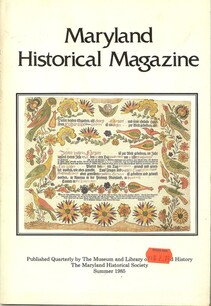 I happened across Volume 80, Number 2 dating from the summer of 1985, an especially interesting time for me as it marked the educational life bridge between my graduation from Gov. Thomas Johnson High School in May, and the start of my collegiate experience at the University of Delaware beginning the following September. I did not obtain this magazine at that time (summer 1985) as I knew very little of Frederick’s history, and was too busy in other pursuits as I was heading to college. However, things were drastically different a decade later as I was actively producing local history documentaries for my employer (Frederick Cablevision) about our county and county seat. This periodical fell into my hands as part of a larger purchase of a smattering of like editions featuring stories with unique connections to Frederick history. In this particular case, the magazine in question included some interesting Black history articles which caught my eye because I was currently working on my documentary Up From the Meadows: A History of Black Americans in Frederick County, Maryland. There was also an interesting Civil War offering in this edition, but the one that most intrigued me was an article entitled Letters to and from Frederick, Maryland, 1833-1848. It was written by Alexandria Lee Levin—more on her in a moment.
Before I recount that which I’ve learned about the fore-mentioned Mr. Beall and the content of some of his family letters, I performed an internet search on the article’s author. I soon learned that she was a direct descendant of our subject—a great-granddaughter. This woman, Alexandra Lee Levin, lived in Pikesville at the time of her passing in 1997, just one year after I purchased the historical magazine. Ms. Levin was also a descendant of the famous Lee family of Virginia, and had died of Lou Gehrig's disease, at the age of 84. Alexandra Lee Levin was a self-taught writer, whose family history provided material for some of her own published works. She was a prolific contributor to the Baltimore Evening Sun op-ed page and other publications, including American Heritage, the Maryland Historical Society Magazine and the Jewish Historical Society journal. An obituary in the Baltimore Sun reported that Ms. Levin made some interesting discoveries in the basement of her former home in Forest Park. Here, in a few battered trunks, the author found a treasure trove of old family letters, which painted vivid pictures of the life and times of ancestors past. Among these, were nearly 100 letters by Enoch Pratt, the benefactor of Baltimore's public library system. Apparently, the trunk's contents had not been examined since1906 and had been largely forgotten. The Pratt letters included one written to Ms. Levin's great-grandfather, John Knight, a Natchez, Mississippi cotton and hardware merchant. This is very pertinent because I wrote a story involving a wealthy planter named John Knight (1806-1864)back in July of 2017 entitled “Breakfast at Tiffany’s….or McDannold’s.” This tale remains one of my favorite stories written as it involved the untimely death of Mr. Knight’s grandson, John Knight McDannold (b. 1874) who died of pneumonia (in Savannah, Georgia) in early February, 1899 while en-route to Cuba with a friend. McDannold’s grandmother, Frances “Fannie” Zeruiah (Beall) Knight (1813-1900), placed a large Celtic Cross monument on his grave, made by the famed Tiffany’s of New York.
Before I get to Mr. William Murdoch Beall in earnest, I will review what I learned back in 2017 regarding his daughter Frances “Fannie” Zeruiah (Beall) Knight from writing my earlier “Story in Stone” piece. First things first, the name Beall is pronounced "bell." Fannie was born in Frederick County in 1813, the daughter of a county sheriff hailing from the Urbana area. Mrs. Beall’s grandfather, Elisha Beall (1745-1831), was a veteran of the Revolutionary War—serving as a lieutenant in the Maryland battalion of the Flying Camp under Capt. Reazin Beall at the Battle of Long Island. His home, named Boxwood Lodge, still stands north of Urbana along MD355. Mrs. Knight was supplied with a hefty inheritance left by her late husband, John Knight, a successful merchant. John Knight was originally from Frederick, but moved to Indiana with his family when he was ten. His father (Elijah) died that same year (around 1816), and his mother (Sarah Dix) followed suit three years later. He instantly became responsible for six little siblings. Eventually, Knight flew the coop, hiked to Cincinnati on his own, and apprenticed in the printing trade. At 19, John Knight went to Natchez, Mississippi and made a fortune as a cotton plantation owner and merchant, operating a hardware store. The young man came back to Frederick in 1833 and took a cousin, Fanny Beall, as his bride. Fannie’s parents (William Murdoch and Fannie (McCleery) Beall) were Mr. Knight’s aunt and uncle on his mother’s side. Yes, these lovebirds were also first cousins. Two sons were born to the Knight couple in 1834 and 1835 respectively, but both died in the years following their birth. The Knights, likely devastated with grief, returned to Mississippi where their daughter Frances (Knight) McDannold (John and Alexandra’s mother) was born. John Knight would not return to Maryland, and the US for that matter, during his own lifetime, dying in October, 1864. At the time of his death, the Knights were residing in Biarritz, France, a resort town on the southwest coast of the country. Fannie Knight came back to Frederick and took up residence with her sister in downtown Frederick. She had plenty of money, including the means in 1866 to have Mr. Knight’s body shipped across the Atlantic to be re-interred here in Mount Olivet. This occurred in June of that year. She also had her deceased two children, who died in the mid-1830s, reburied here in 1856, after being originally buried from in All Saints Episcopal graveyard. A large obelisk-style monument would be erected over the Knight gravesite. Mrs. Knight would keep multiple residences and continued traveling, but utilized Frederick as her home base. Her permanent winter residence was located at 217 East 2nd Street. It is here where the McDannold children came to live in the mid-1880s from New York City after being orphaned by the premature deaths of their parents. William Murdoch Beall William Murdoch Beall was born March 16th, 1789 to Rev-War veteran Elisha Beall and wife Jane Perry. Elisha’s father, Nathaniel Beall, was one of the first inhabitants in the area of Urbana, and built a log cabin structure here on the property. The cabin was later supplanted by a stone masonry house around 1810, and named Boxwood Lodge. The house still stands today on the east side of Urbana Pike, sandwiched in between the Villages of Urbana and the Urbana District Park where my boys played many a flag-football games through the Frederick County Parks & Recreation program. Elisha died in 1831 and in his will gave his third son, William Murdoch, 131 acres of his property including the stone dwelling house. William Murdoch Beall is said to have been “a man of standing” in the Frederick Community. Elected one of the managers of the Farmers & Mechanics Bank when it opened in 1817, he rose in rank to become cashier, second only to the bank’s president, Dr. William Tyler. The bank was located on the northeast corner of North Market and East 2nd Street. The family owned the farm in Urbana, but their primary residence was in Frederick and actually next to Mr. Beall's workplace. The Beall's lived in a house at the north corner of N. Market Street and Market Space. The former location of the home is today the alley adjacent Brewer's Alley restaurant that leads back to a parking deck and additional parking spots and a restaurant in Market Space. The home had come through inheritance and trusts from Andrew McCleery, Mrs. Beall's grandfather. Ms. Alexandra Lee Levin gives us a glimpse of William M. Beall’s family by relaying the contents of a letter written in July, 1833 regarding the marriage of Mr. Beall’s daughter Fannie who I introduced to you earlier. The occasion was her marriage to John Knight on July 16th, 1833 as it was the social event of season. Apparently the guest list had to be “drastically curtailed” according to Ms. Levin as she transcribed content from a letter written by Fannie’s sister, Jane Mary Ann Beall Pettit, who had traveled from her home in Cumberland for the special occasion. 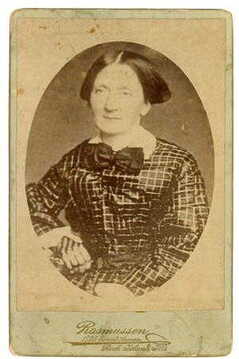 Jane M. A. (Beall) Pettit Jane M. A. (Beall) Pettit Among the guests who made the cut for this wedding (held at the Beall residence), was Fannie’s maternal aunt, Zeruiah McCleery Knox, widow of Rev. Samuel K. Knox who had died the previous year. Dr. Knox was the first principal of Frederick College, aka “the old Academy” once located on Council Street adjacent Court House Square. (See earlier story from May, 2020 entitled "Fort Knox.") Mrs. Pettit penned the letter to her husband, Henry McEwan Pettit, in which she recounted the joyous event. (Note: At the outset of the letter, Ms. Levin learned that the writer had taken ill, and had retired to her bedroom early.) “Frances looked lovely in her white dress, white satin slippers, and lace veil. She carried a Berlin-work beaded bag and a handsome fan. There were no females out of the family except Mrs. William Tyler and Mrs. Samuel Tyler. Mr. Smith married them. There was pretty much a squeeze. All kinds of refreshments were provided in abundance, but no supper. The noise disturbed me until one o’clock when the house was finally still. I fell asleep and was awakened between one and two o’clock by music—they were serenading Frances—a clarinet and flute accompanied by two voices. They first played the “Arab’s Daughter.” The bride and groom left in the nine o’ clock car for Baltimore on their way to New York, where they will stay three weeks.” Interestingly, more on the Knight newlyweds was shared in another letter as they returned to Frederick (from New York) and had a harrowing trek to Mr. Knight’s home in Mississippi. Some of the journey utilized the relatively new National Pike as the couple traveled by stagecoach and likely visited the Pettits on their way through Cumberland. The letter states: “The coaching agent had promised them the very best vehicles and horses throughout the entire route (to Cincinnati), but they were consistently put into old coaches with broken down or unmanageable horses. This resulted in continual delays plus a bruising upset at the foot of Sideling Hill, the exceedingly steep grade midway between Hagerstown and Cumberland. It was with relief that they finally reached Cincinnati where they took a boat for Louisville. They would arrive safely at Natchez on September 24th, 1833.” I assume the Bealls visited the Knights in Natchez at some point as there are letters talking of trips by other family members. One such was sent by Frances (McCleery) Beall to her sister, the previously mentioned Zeruiah (McCleery) Knox, who at the time received the letter while visiting her niece in Mississippi. The highlight of this letter came in Mrs. Beall saying that she had recently persuaded her husband to forego his favorite sport of betting on gamecock fights in town, and he, in turn, had requested her to give up taking snuff. William Murdoch Beall was a delegate of the Jackson Convention held in Baltimore in 1827 and served as Secretary. Ms. Levin uncovered some letters that exemplified Mr. Beall’s connection to Andrew Jackson and the forementioned convention’s chief organizer, a Frederick lawyer named Roger Brooke Taney: “A staunch Jackson man, William M. Beall counted as his oldest and best friend Roger Brooke Taney. On August 5, 1834, Roger Brooke Taney and his brother-in-law, Francis Scott Key, spent the night at the Beall home. The following day an escort of over one hundred persons, mounted on horseback, turned out in Frederick to meet Taney, a distinguished former resident of town, and conducted him to a dinner given in his honor. This banquet took place at Courthouse Square, site of today’s Frederick City Hall. Another family connection comes into play here as the courthouse itself had been designed in 1785 by architect Henry McCleery, Mr. Beall's father-in-law. A book published in 1967 to commemorate the Sesquicentennial of F & M Bank includes an interesting anecdote and letter from 1833 involving friends Beall and Taney. First a little context as Roger Brooke Taney entered President Jackson's Cabinet as Attorney General in 1831 and was Jackson's legal advisor during the President's crusade against the Second Bank of the United States. After Jackson was reelected in 1832, Taney advised him to withdraw the Government's deposits from the Bank. When Treasury Secretary Duane refused to do so, Jackson named Taney Acting Secretary in his stead. Taney's appointment was never confirmed by Congress, but during his nine months as Acting Secretary he transferred the Government's deposits from the Second Bank to designated commercial banks throughout the country. On October 15th, 1833, Taney wrote to William M. Beall: Washington, DC: My dear Sir: After congratulating you most sincerely on the result of the elections. I have to thank you and our friend Schley...for the kind vindication of me which appeared in the Herald...the people appear tp be ratifying most triumphantly the removal of the deposits—and it bids fair I think to be one of the most popular acts of the administration...made the currency more sound and healthful than it was before by compelling the Bank of the U. States to honor the notes of its distant branches...It is I think the final blow to the Bank of the U. States and its dissolution at the end of its charter is now inevitable. But to leave politics and come to humbler subjects—If you meet with a cow that is really a good one give a liberal price if necessary. My object is to get a good one and I leave it entirely to your judgement what price ought to be given—I shall be entirely satisfied with what you do—and obliged by the trouble you take-- I am dear Sir truly your friend, R. B. Taney Ms. Levin in her article continues with another story: “When Taney became Chief Justice of the US Supreme Court, the second letter he wrote after hearing of his confirmation by the Senate was to Beall on March 23, 1836. His first letter was to President Andrew Jackson. In March 1837 ex-President Jackson set out on his homeward journey to his residence, The Hermitage, near Nashville, Tennessee. Two days after Martin Van Buren took office on March 4, Jackson boarded the steam cars of the B&O which conveyed him to the western terminus of the railroad at Ellicott’s Mills. From thence he was to (stage) coach to Wheeling. William M. Beall, Dr. William Tyler, and Judge Abram Shriver were chosen to greet him as he passed through Frederick. Taney accompanied Jackson to Frederick and introduced the Beall family to the old general. The Beall’s youngest daughter, Martha (b. 1820), remained with her parents until her marriage in January, 1842 to Samuel Hunt, formerly of Frederick but then a prospering leather goods merchant in Baltimore. (She would live out the rest of her life in Charm City, dying in 1891 and buried in Greenmount Cemetery.) The empty-nester Bealls soon became the focal point of a very special present concocted a few months later for daughter Fannie, all courtesy of son-in-law John Knight. As part of an annual buying tour for his Natchez store, John Knight found himself in New York City in August of 1842. While there, he wanted to obtain a very special gift for wife. He sought out a noted portrait artist by the name of Edward Dalton Marchant (1806-1887), originally from Massachusetts. Largely self-taught, Marchant began his career as a house painter, but eventually set up a portrait studio in his hometown of Edgarton. He is known to have studied briefly with artist Gilbert Stuart in Boston in 1825, familiarizing himself with the artist's style. Marchant began a career as a journeyman artist by late 1826, advertising his services (of painting prominent citizens) as far away as Charleston, South Carolina. He would relocate to New York City after 1832, completing many portraits of well-to-do merchants and political leaders during the 1830s and 1840s. In a letter dated August 15th, 1842, John Knight notified Mr. and Mrs. Beall that he had hired Marchant to paint their portraits, one hand each, for the price of $250. The artist’s room and board would be supplied by the Bealls while he worked on location here in Frederick to complete the contract. Mr. Beall wrote to Knight five weeks later on September 21st: Mr. Marchant arrived here on the 5th and commenced operations the next day, finishing the pictures on the 17th. He stayed at our house whilst he was in our city. He left this morning for Baltimore after tendering your Aunt Beall and myself many thanks for our kindness to him. We were both pleased with him and found him a modest, unassuming, and intelligent gentleman. When Mr. Thompson (Jerome B. Thompson)an artist who is painting in Frederick now, heard that you had selected Mr. M. he said he was astonished at your sending him, and that if you had selected Page (William Page) or Henderson (David English Henderson) you would most certainly have obtained good likenesses and fine painters. He thinks Marchant cannot paint, and that his pictures are gaudy. I, however, found Marchant remarkably sensitive, and these remarks of Thompson annoyed him excessively, saying that Thompson, in his opinion, was a strange fish and wholly irresponsible, and was so considered by all who knew him. Marchant was about seven days engaged at my portrait. He says it was one of the most troublesome he ever took, owing to the variability of my countenance. Your Aunt’s was completed in about three days, as he had but little trouble with hers in consequence of the uniformity of her face. He has given mine a serious, contemplative cast, or shall I say, a business expression, which he supposed would be more pleasing to you and would wear better than a smile. The eyebrows are consequently somewhat contracted and there is some little severity indicated in the expression, but he has painted me faithfully, for when my mind is engaged, my appearance is almost invariably austere and repulsive, yet the lips exhibit a sufficient degree of pleasantry to counteract the severity of the brows. Your Aunt’s is amiability itself, consequently most accurately taken, for a sweeter woman does not live on this earth. On one side of my canvas he has an inkstand with two pens and several packages of papers sealed up, indicative of my profession. On your Aunt’s he has a Bible in front of her on a stand, with a small slip of white paper projecting, showing the place where she had been reading. While sitting, I wore my winter clothing, blue coat and blue-black velvet vest, while your Aunt wore her blue-black silk dress, crimped collar, a gauze scarf, and cap of Irish gauze with long tabs. Her left arm is resting on the top of the chair with the hand hanging down, the veins on the back of the hand painted to the life. He has given me an excellent forehead, better than I supposed I possessed; Marchant, however, says not. The pictures produced considerable excitement and about seventy people visited here to see them. Some say that my likeness is good and your Aunt’s couldn’t be better, while others say the reverse. As evidence that they are both good, I will say that all the children in the neighborhood knew who they were in a minute they laid eyes on them. Artist Thompson, who had been so contemptuous of Marchant, completed Miss Schley’s portrait a few days before Marchant finished his. Marchant took eleven days to do both of ours, while Thompson had spent three weeks on hers. I have seen her portrait, and you may rest assured that it bears no comparison to ours, for although she is a young, sprightly girl her picture does not exhibit one-fourth of the expression that ours do, notwithstanding our being grandparents and plain people. In addition, his picture is gaudy.” I’m assuming that Fannie enjoyed the portraits of her parents which made their way to Natchez and eventually would return to Frederick when she moved here after John’s death. As for the artist, Marchant is known to have completed commissions in several Ohio cities as well as in Nashville and New Orleans, before settling in Philadelphia in 1854 where he would remain for another thirty years. Although mostly known for his portraits in oil, Marchant also created miniatures, including a self-portrait of himself. An ardent opponent of slavery who advocated for the return of slaves to Africa, Marchant was commissioned by the Union League of Philadelphia in December 1862 to paint a portrait of Abraham Lincoln to be displayed in Independence Hall. The artist worked in the White House for several months in early 1863, having daily contact with the President, and ultimately depicted him seated at a table having just signed the Emancipation Proclamation. This was not the first US President to sit for the artist as E. D. Marchant also painted portraits of John Quincy Adams and Andrew Jackson, plus was commissioned to paint a portrait of Congressman Henry Clay. William Murdoch Beall died on April 23rd, 1847. Thankfully, his family had a professional likeness to remember him by. The Frederick Examiner newspaper eulogized Mr. Beall as: "one of the most useful, energetic and valuable of our fellow citizens. He was a member of the electoral college for the State Senate, was Sheriff of the County, for many years Cashier of the Farmers’ and Mechanics’ Bank of Frederick County, and at the time of his death President of the Mutual Insurance Company of Frederick County. In all the relations of life, he was marked for his integrity, sound judgment, and solid worth.” William Murdoch Beall was originally laid to rest in the burying ground of All Saints Episcopal Church, once located between Carroll Creek and East all Saints Street. His body was moved to Mount Olivet in 1856, two years after the cemetery opened. The family lot is Area F/Lots 54 and 55. Mrs. Beall can be found as head of household in Frederick City in the 1850 Census, along with daughter Jane Mary Ann Pettit who had relocated from Cumberland after being widowed herself in 1847. Frances (McCleery) Beall died in 1852, and would also be buried twice, so to speak. Mrs. Beall's 1852 will left in trust to daughter Jane "the house now occupied by me as a dwelling and by J.J. and D. B. Hunt as a dry goods store." In 1857, Jane purchased the home on East 2nd Street, and would be joined there by sister Fannie Knight in the 1860s. Jane (Beall) Pettit died in 1892, at which time she would be buried with her husband in the plot immediately behind her parents, and diagonally from John Knight who had been re-interred from France. Fannie Knight lived up through 1900. Author's Note: The Knight Family papers can be found in a collection consisting of 13 boxes housed at the Duke University Library in Durham, North Carolina. Here is an abstract for the holding:
Correspondence, diaries and notebooks, financial papers, legal papers, genealogical documents, printed materials, and other materials pertain to the Knight family of Natchez, Mississippi and Frederick, Maryland. Materials in the collection date from 1784 to 1960, and the bulk date from the 1840s to the 1890s. The majority of the papers concern the personal, legal, and financial activities of John Knight (1806-1864), merchant, plantation owner, and investor; his wife Frances Z. S. (Beall) Knight (1813-1900); and their daughter Frances (Fanny) Beall Knight; as well as relatives, friends, and business partners, especially banker Enoch Pratt and William M. Beall. Significant topics include: life in Natchez, Mississippi and Frederick, Maryland; plantations, slaves, and slavery in Mississippi and other Southern states; 19th century economic conditions, especially concerning cotton, banking and bank failures; U.S. politics in the 1850s-1860s; the Civil War, especially in Maryland; cholera and yellow fever outbreaks; 19th century family life; and the family's travels to Europe, Russia, and other places from 1850 to 1864. Genealogies chiefly relate to the descendants of Elisha Beall of Maryland, and the McCleery, Pettit, and McLanahan families of Indiana and Maryland. |
STORIES
|
Archives
July 2024
June 2024
May 2024
April 2024
March 2024
February 2024
January 2024
December 2023
November 2023
September 2023
August 2023
July 2023
June 2023
May 2023
April 2023
March 2023
February 2023
January 2023
December 2022
November 2022
October 2022
September 2022
August 2022
July 2022
June 2022
May 2022
April 2022
March 2022
February 2022
January 2022
December 2021
November 2021
October 2021
September 2021
August 2021
July 2021
June 2021
May 2021
April 2021
March 2021
February 2021
January 2021
December 2020
November 2020
October 2020
September 2020
August 2020
July 2020
June 2020
May 2020
April 2020
March 2020
February 2020
January 2020
December 2019
November 2019
October 2019
September 2019
August 2019
July 2019
June 2019
May 2019
April 2019
March 2019
February 2019
January 2019
December 2018
November 2018
October 2018
September 2018
August 2018
July 2018
June 2018
May 2018
April 2018
March 2018
February 2018
January 2018
December 2017
November 2017
October 2017
September 2017
August 2017
July 2017
June 2017
May 2017
April 2017
March 2017
February 2017
January 2017
December 2016
November 2016











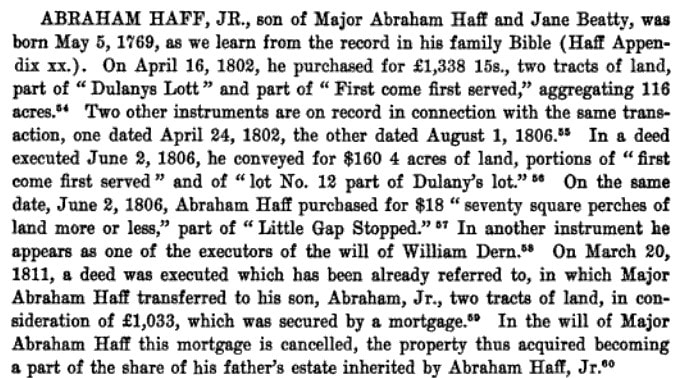



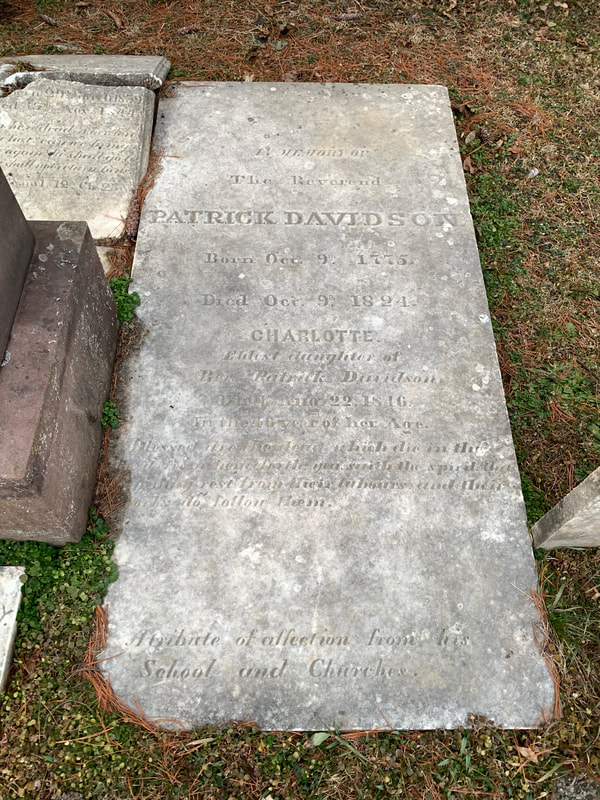




















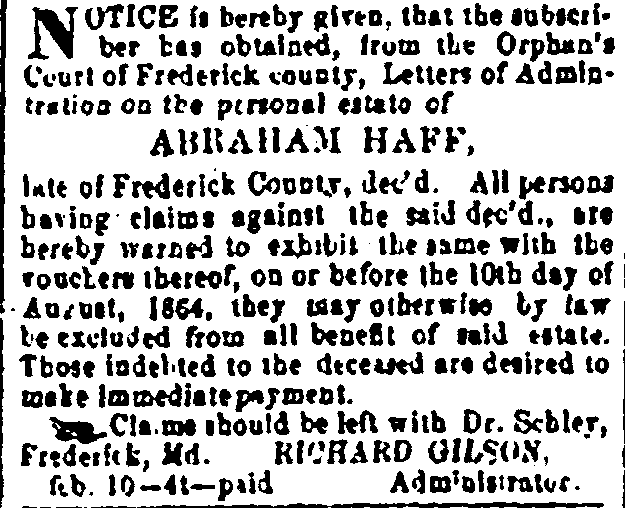







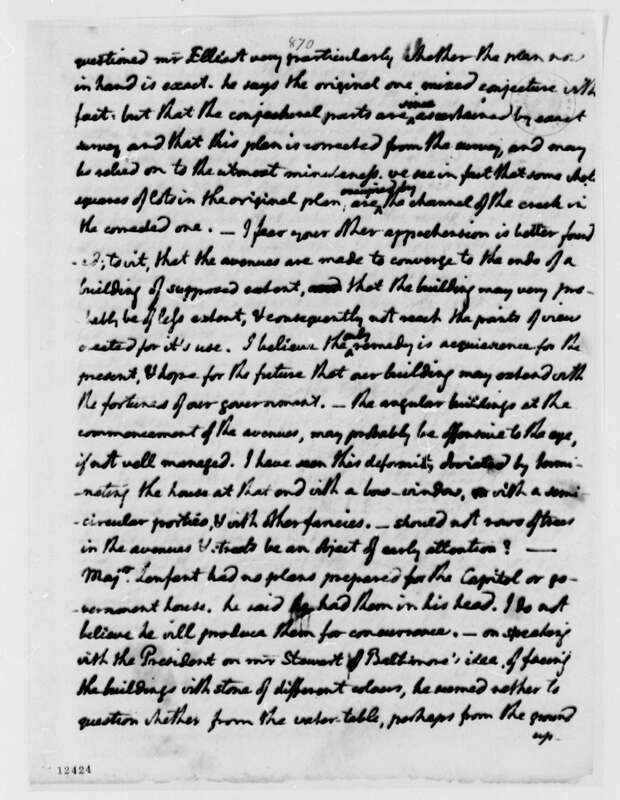




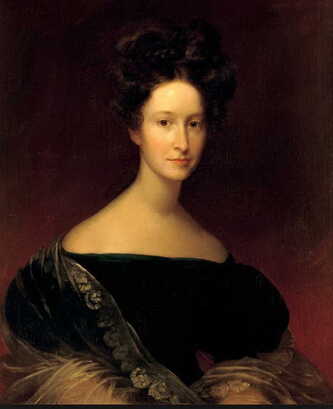








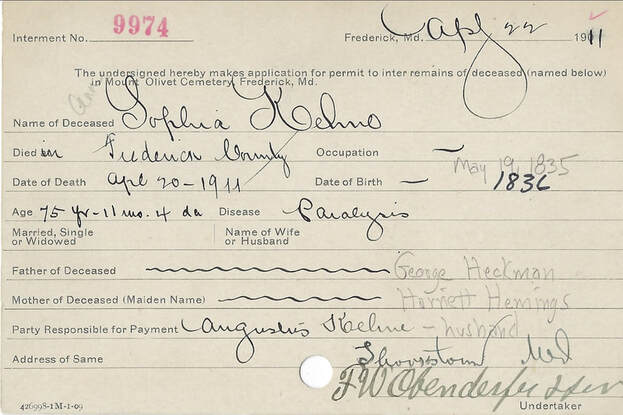







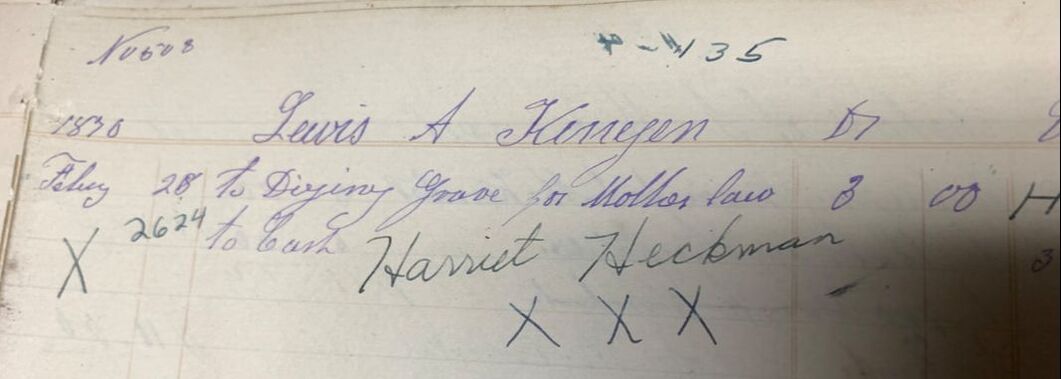

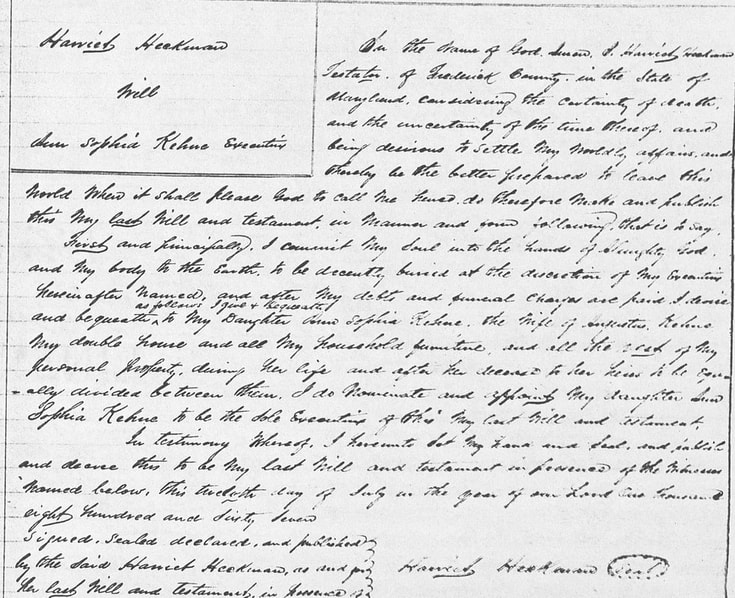







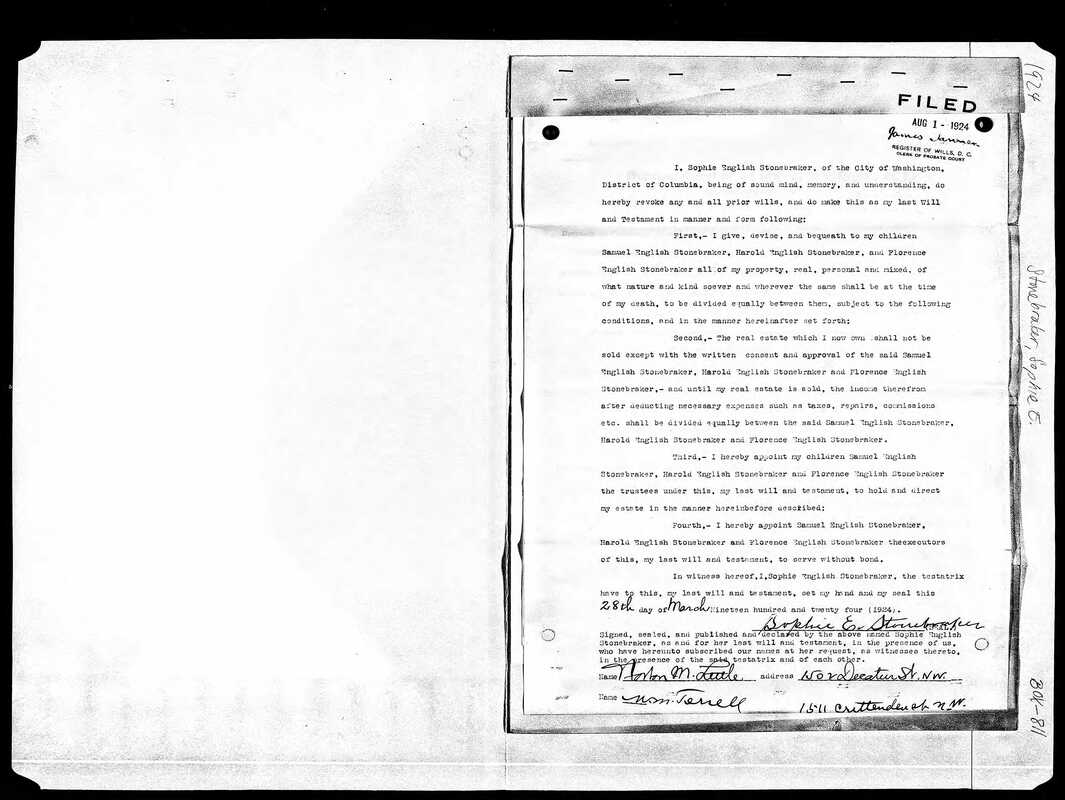






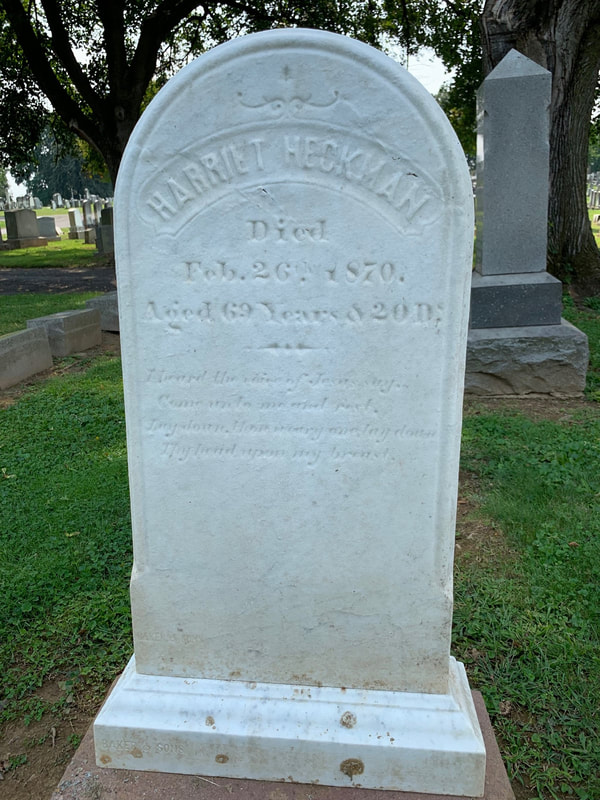














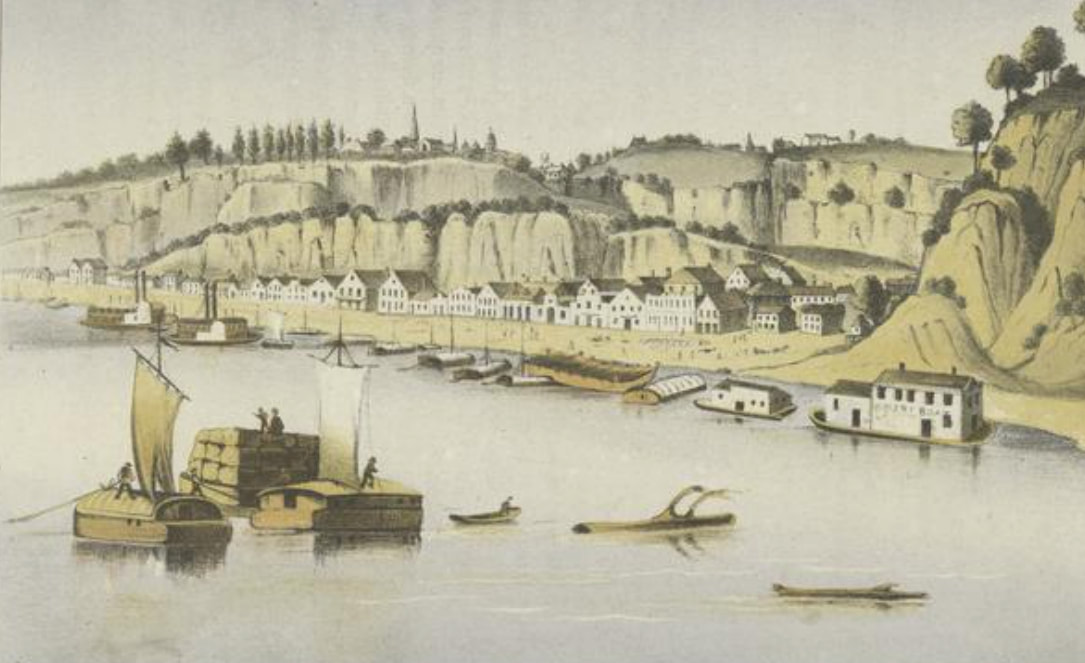












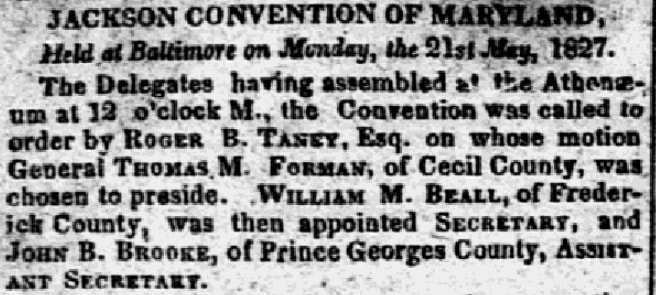

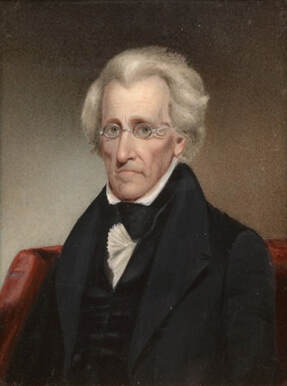

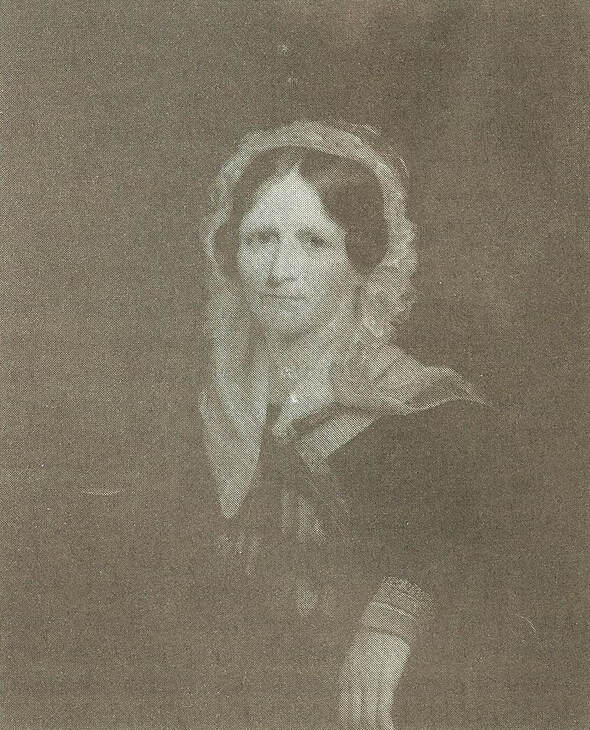



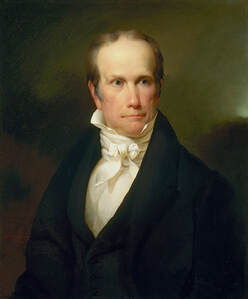


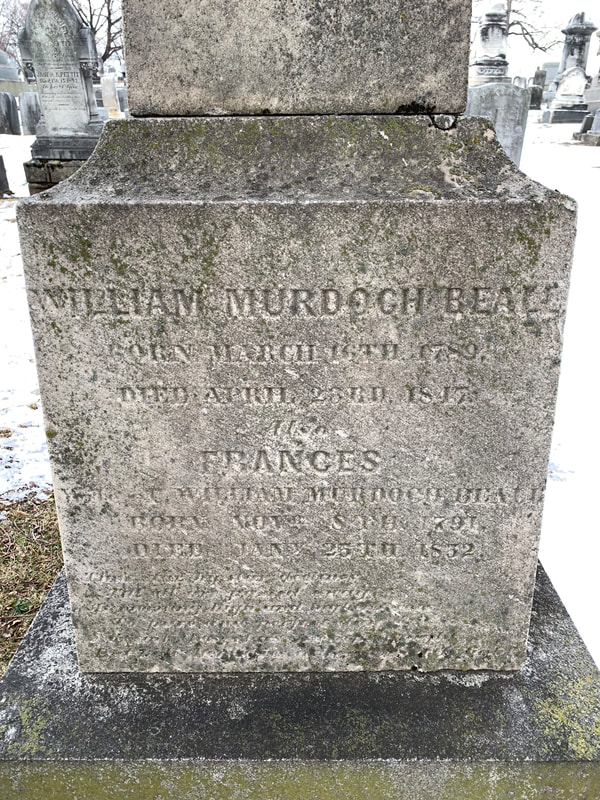






 RSS Feed
RSS Feed